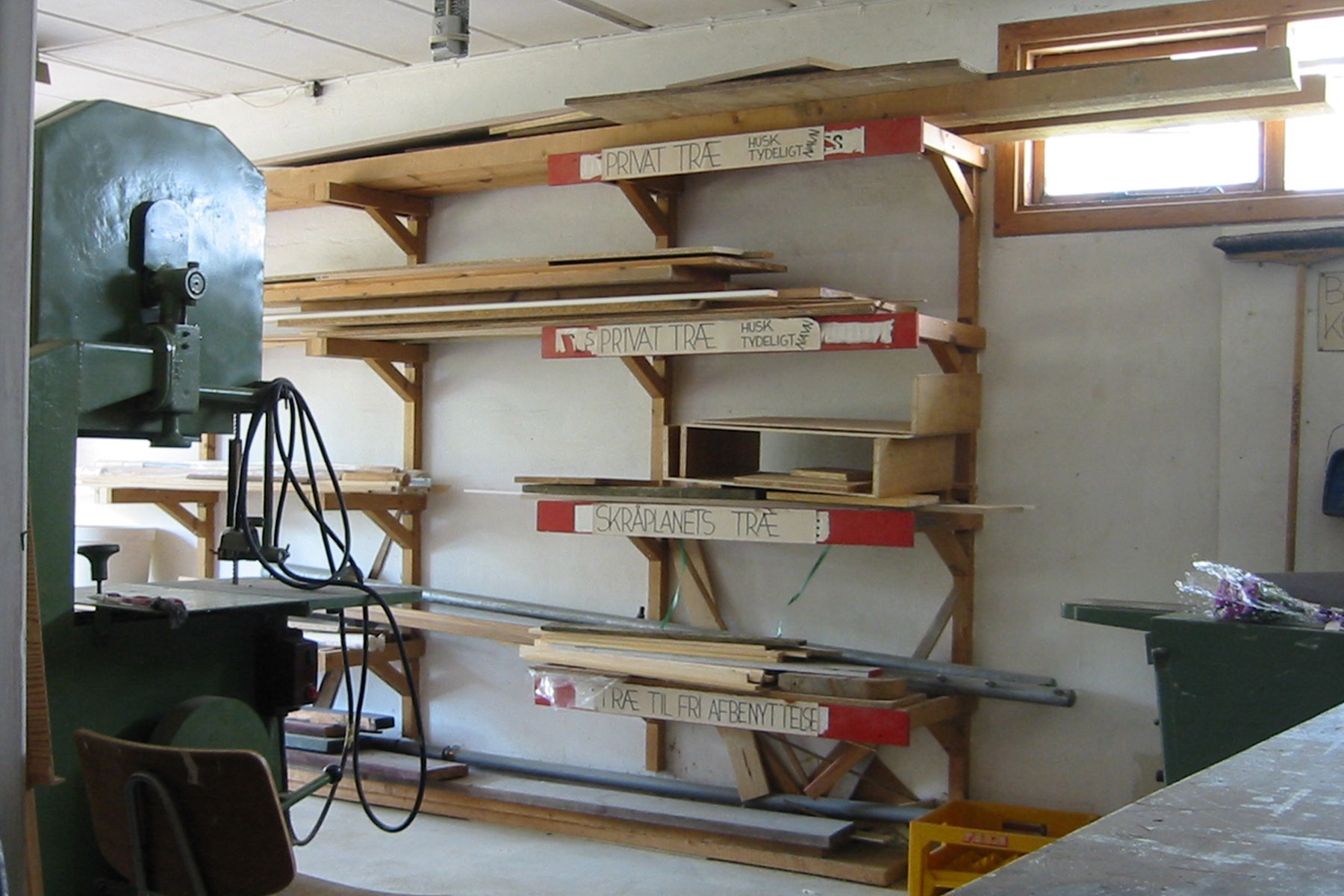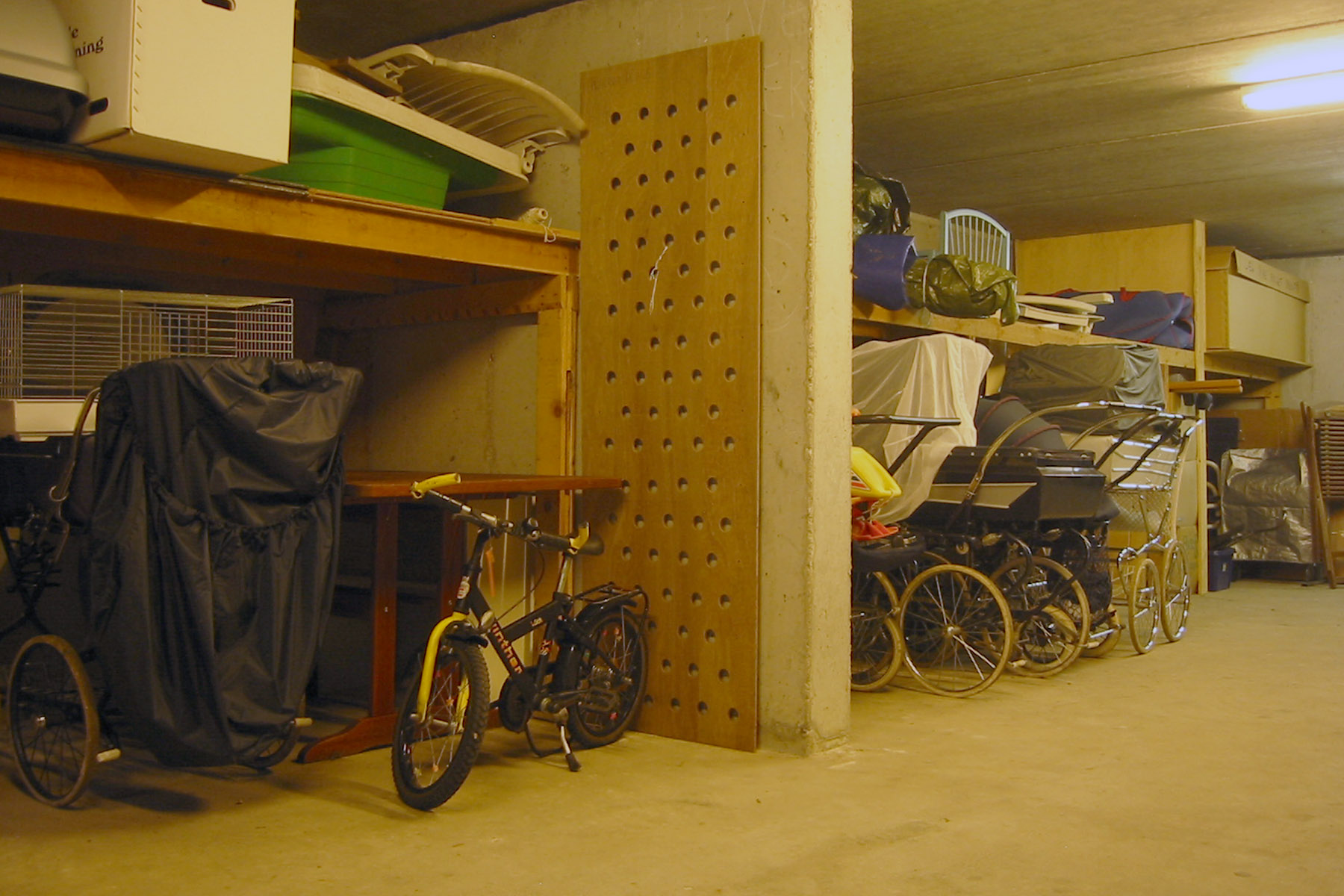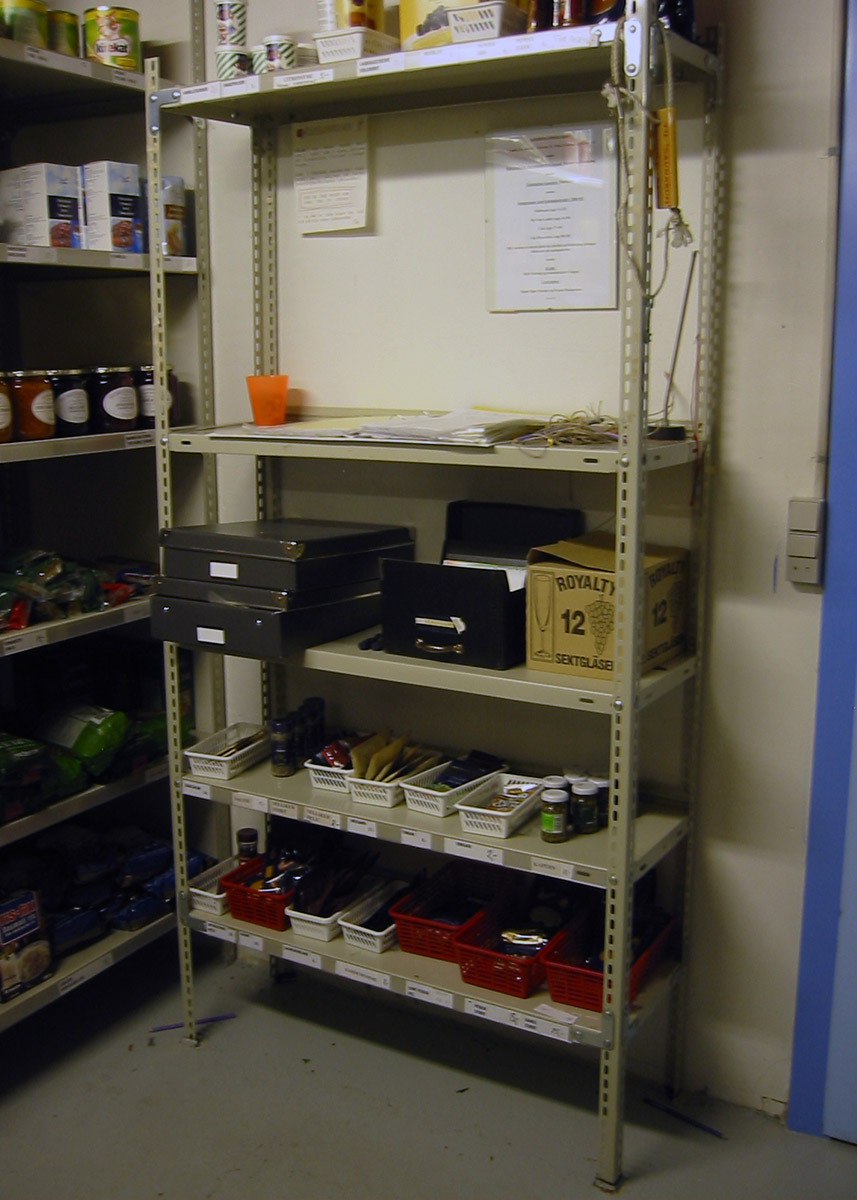In any household or community, there are items that are not used daily but are necessary and require storage. Too often these bulk storage spaces are forgotten during the planning stages or omitted due to cost. In a Common House, there is a need for bulk storage of food items that can be accommodated in a pantry. Storage will also be required for seasonal decorations (Christmas tree, ornaments, and lights) and special events (additional folding chairs, tables, linens, special occasion stemware or dishes). There may be supplies for building maintenance or operations (light bulbs, lumber, ladders or lawnmower) that require storage. Storage spaces equivalent to 15% of the total Common House area should be reserved for communal storage.
Residents generally find themselves living in smaller homes than they are accustomed to and are not able to purge extra possessions. Provide a central storage locker for each unit in the Common House. If lockers are not provided, residents will often utilize porches and parking spaces to satisfy their storage needs.




Please Note:
This series of blog posts is focused on explaining common design patterns in cohousing. Grace Kim, a founding principal and owner of Schemata Workshop, has identified patterns applicable to cohousing from "Pattern Language" by Christopher Alexander and has added some of her own.
Grace's additional patterns pay particular attention to the Common House because its design requires special consideration. As the living room for the community, the Common House sets the initial impression for visitors about what cohousing is, what your community values might be, or the perceived benefits of living in community. Schemata Workshop has analyzed scores of common houses in Denmark and North America to discern what does and does not work. Following Alexander's concept of Pattern Language, Grace has thoroughly documented the necessary programmatic and design elements for a successful Common House.
To learn more about cohousing at Schemata, visit our cohousing page.

